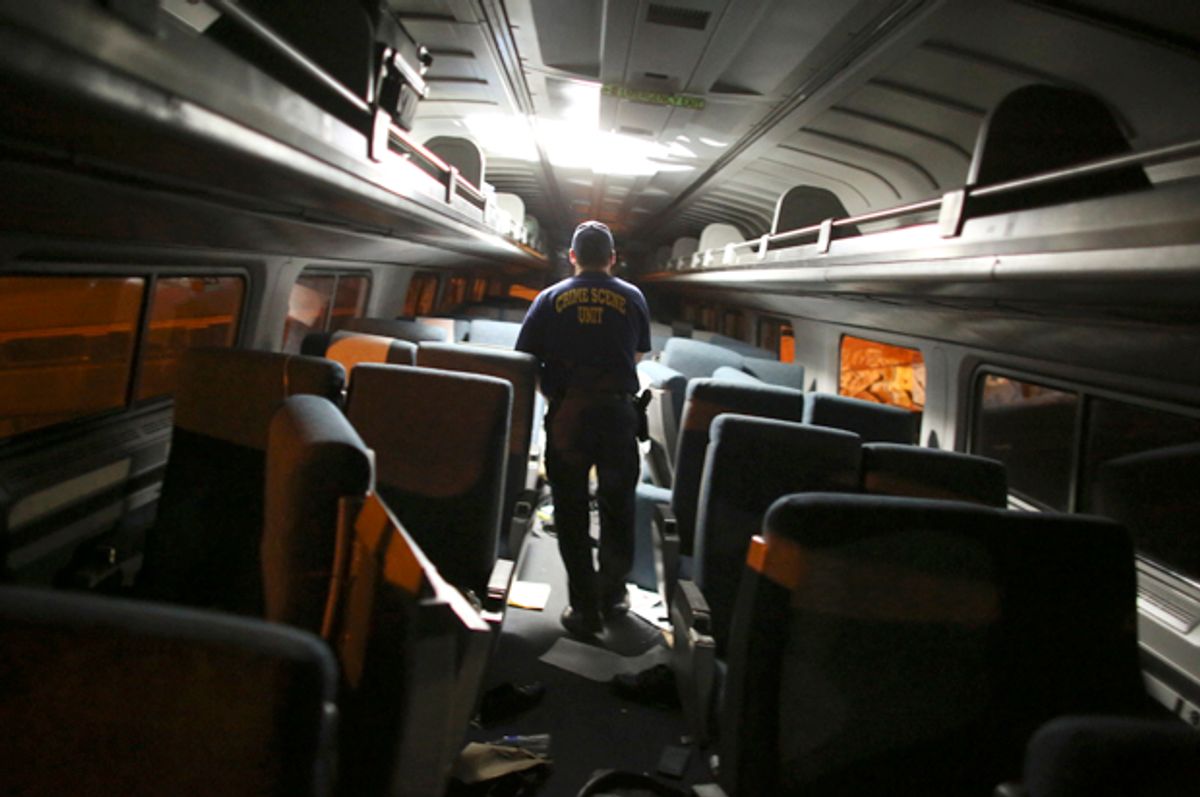As someone who commutes by train regularly, the tragedy of this week’s Amtrak derailment near Philadelphia was both frightening and tragic. As a former three-term board member of Amtrak, and chair of its finance committee, the loss of life and injury make me sad, angry and ashamed.
While we don’t yet no why the train was taking that curve in excess of 100 miles an hour, it seems likely the investigation will determine that speed was at least a contributing factor – if not to the crash itself, then at least to the scale of the disaster. And it’s also possible that speed may have been the sole, determinative factor.
If either is the case, and if we are honest with ourselves, what happened to Amtrak 188 was totally avoidable.
This week, the entire country will become media-educated about positive train control – a system which monitors and has the ability to set the speed of trains while they are in transit. While positive train control exists in several sections of the route Amtrak 188 was traveling, it was not installed and operational at the site of the derailment.
The only reason that the entire Northeast Corridor and every passenger railroad in this country doesn’t have positive train control is lack of public investment. Even without knowing the specifics of that particular track section, I am confident that whatever funding was allocated for this project through our federal appropriations process came late and was inadequate to do the job all at once.
Which means -- just as the lead board member on site from the NSTB has already said -- that if positive train control had been installed and active, that train passengers riding Amtrak would not have been exposed to the risks that injured and killed them. Therefore, the lack of funding this important safety measure forced riders to face unnecessary risk, ultimately resulting in this tragedy.
Having held leadership positions on train oversight and management agencies, including the Boards of Amtrak and NJ Transit, over several decades, I know that, regardless of who was leading those agencies, irrespective of their political affiliations, their budgets were squeezed to distortion. I also know, having been in dozens and dozens of these meetings, that allocating rail transit dollars was always driven by three priorities:
First: Mandated costs. Amtrak is required to spend money on legal and compliance obligations that have little to do with running trains today. One example is Amtrak’s legal requirement to pay the pensions of retired railroad workers who never were employed by Amtrak. However costs such as this got on Amtrak’s budget, they were never optional and seldom negotiable.
Second: Safety. The fixed costs of Amtrak meant that, many will be surprised to hear, safety spending came second. Even so, every leader I worked with at Amtrak and NJ Transit, committed every available penny to constructively maintain safety.
Third: Everything else. With what’s left over – often close to or even literally zero – is spent on investing in people, improvements and maintenance. Which explains why, in the rail business, there is a long-running, historical pattern of deferred maintenance – not just on tracks but tunnels and bridges as well.
We should all – everyone from political leader and taxpayer – be as ashamed as I am about what happened to Amtrak 188. If only because we are such an affluent nation that allowed this to happen when it was totally avoidable. It speaks to not only the nation we are but the country we should want to be.
No country in the world has a passenger rail service that is not subsidized by government. Running good, safe railroads is not rocket science -- but it is capital intensive. And if we’re going to avoid another disaster like the one this week, running trains is not something we can continue to do on the cheap.
Amy Rosen served on the Board of Directors Amtrak for three terms and Chaired Finance Committee for 6 years. She also served as Vice Chair of NJ Transit Board for more than a decade.

Shares